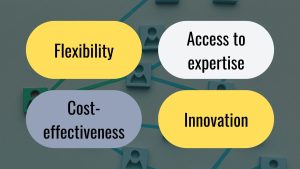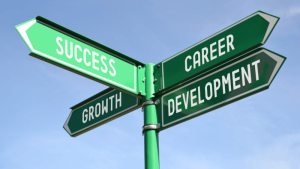Retention Challenges in Augmented Teams
Introduction In today’s dynamic business environment, augmented teams have become a critical strategy for organisations looking to expand their capabilities, innovate quickly,...

Introduction
In today’s dynamic business environment, augmented teams have become a critical strategy for organisations looking to expand their capabilities, innovate quickly, and remain competitive. Extended teams, made up of a mix of internal employees and external experts or contractors, bring diverse skills, perspectives, and flexibility. However, retaining talent in these hybrid teams presents unique challenges. This article examines the challenges of augmented teams retention and outlines effective strategies for keeping talent engaged.
Understanding Augmented Teams
Extended teams combine internal employees with external contractors, freelancers, or consultants. This model leverages the best of both worlds: the deep organisational knowledge and commitment of internal employees, and the specialised skills and flexibility of external experts. Augmented teams are especially valuable in technology-driven industries, project-based work, and scenarios that require rapid scaling or highly specialised expertise.
Augmented Teams Benefits

- Flexibility: Ability to scale quickly based on project needs.
- Cost-effectiveness: Reduced overhead costs compared to hiring full-time employees for short-term needs.
- Access to expertise: Immediate access to specialised skills and knowledge.
- Innovation: Different perspectives foster creativity and innovation.
Despite these benefits, retaining talent in extended teams is challenging due to inherent differences in employment conditions, organisational culture, and engagement levels.
Retention Challenges in Augmented Teams
1. Cultural Integration
Challenge: Integrating external contractors into an organisation’s culture can be challenging. They may feel like outsiders, which can lead to alienation and high turnover.
Strategy: Foster an inclusive culture where external team members are valued and included in team activities. Regularly communicate the company’s vision, values, and goals to all team members. Providing access to the same tools and resources as full-time employees helps create a sense of belonging.

2. Communication Barriers
Challenge: Effective communication can be difficult across geographic, cultural, and organisational boundaries. Miscommunication or lack of communication can lead to misunderstandings and disconnects.
Strategy: Implement robust communication platforms and methods. Regular virtual meetings, clear documentation, and open communication channels ensure everyone is on the same page and aligned. Encourage the use of collaboration tools like Slack, Google Meet, and Jira to ensure communication flows smoothly.
3. Goal Alignment
Problem: The goals and priorities of augmented team members may differ from those of internal team members, resulting in goal misalignment and decreased engagement.
Strategy: Clearly define and communicate project goals, roles, and expectations. Align individual goals with overall project and organisational goals. Regular feedback sessions and performance reviews help ensure that everyone is on the same page and working toward common goals.

4. Recognition and Rewards
Problem: External contractors may feel undervalued if they do not receive the same recognition and rewards as full-time employees.
Strategy: Recognise and reward the contributions of all team members, regardless of their employment status. Implement a recognition program that recognises accomplishments, milestones, and exceptional performance. Offering competitive compensation, bonuses, and incentives can also boost morale and retention.
5. Career Development Opportunities
Problem: Augmented team members may feel a lack of opportunities for career growth and development, leading to disengagement and turnover.
Strategy: Provide learning and development opportunities to all team members. Offer access to training programs, workshops, and professional development resources. Encouraging skill development and career advancement helps retain top talent and keep them motivated and engaged.

6. Job Security and Stability
Challenge: External contractors often face job insecurity, which can impact their engagement and commitment.
Strategy: Where possible, offer long-term contracts or the opportunity to transition to permanent employment. Be transparent about project timelines and potential future opportunities. Providing a sense of job security can increase loyalty and retention.
7. Work-Life Balance
Challenge: Contractors may experience poor work-life balance due to changing workloads and project demands.
Strategy: Promote a healthy work-life balance by managing workloads effectively and respecting personal time. Encourage flexible work arrangements and support well-being initiatives. A balanced approach ensures that team members remain productive and engaged.

Conclusion
Retaining talent in augmented teams requires a strategic approach that addresses the unique challenges that arise in this hybrid model. By cultivating an inclusive culture, ensuring effective communication, aligning goals, recognising contributions, providing career development opportunities, offering job security, and promoting work-life balance, organisations can keep their extended teams engaged and motivated.
The future of work is becoming increasingly collaborative and dynamic. Embracing augmented teams while implementing these retention strategies will not only help retain top talent, but will also drive innovation and success in an ever-changing business landscape.